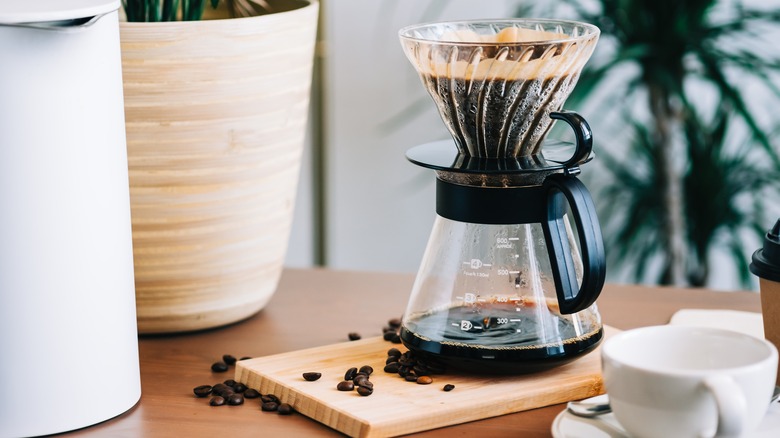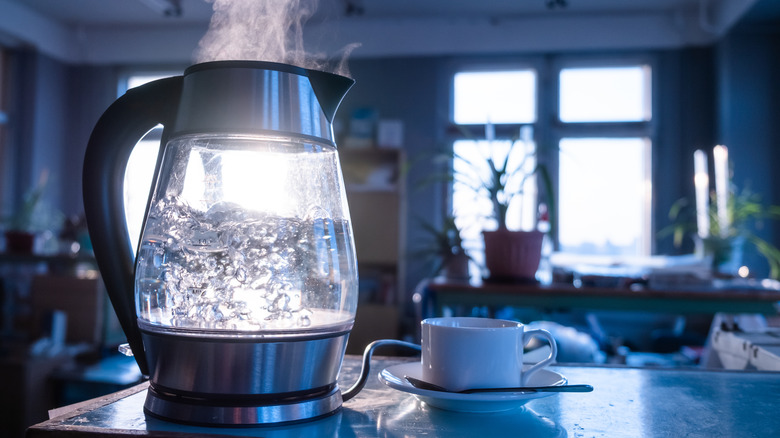The Biggest Mistake You're Making With Pour Over Coffee
Pour over coffee used to be a bit of a mystery. Back before the age of high-end coffee shops, a ceramic cone in a coffee shop was a real curiosity. Why would you bother to make an individual cup of coffee for every order? But, according to Perfect Daily Grind, pour overs have a long history, with the iconic Chemex being invented way back in 1941. Despite falling into obscurity for a while, they were loved for their ability to produce clean-tasting coffee. Large batch brewers then worked for the 1990s coffee crowd, but as tastes evolved, coffee connoisseurs were looking for a fresher cup that hadn't been sitting out and hand-made pour overs were the perfect answer.
Everyone has their preferred coffee-making method, but there is something special about pour overs. It might be the ritual, which still has a handcrafted feel compared to drip coffee, but more likely, it just comes down to taste. As Serious Eats states, pour over gives you control over every variable of your brew, allowing you to make the perfect cup for both you and your beans. Pour over is the method for people who think about coffee a lot, and there are a lot of people like that. But with that level of detail comes the potential for mistakes, and if you are learning your way around a pour over, you may not have thought about one of the biggest ones.
The wrong temperature water can ruin your pour over
You've got your favorite beans, you've freshly ground them, you know the right ratio for your pour over. What's left? It's the temperature of your water — one of the most important variables that can make or break your coffee. According to Kitchn, it all comes down to extraction, the process by which water leaches out flavor from your coffee beans. Water that is too hot can over-extract your coffee and leave you with burnt, bitter flavors; Water that is too cold can be weak and sour tasting. Luckily, there is a happy middle where you will get the best flavor without the bitter side, although it's a pretty small range.
According to Stumptown Coffee, the ideal temperature is 205 degrees Fahrenheit (or between 195 degrees Fahrenheit and 205 degrees Fahrenheit, per Specialty Coffee Association). But how do you know when you hit it? You could invest in an instant-read thermometer, which will give you excellent precision, or you can buy an electric kettle where you can set a specific temperature. But if both those options seem like a bit much, you can go more basic by bringing your water to a boil and then letting it sit off heat for about 30 seconds, as Stumptown Coffee explains.

